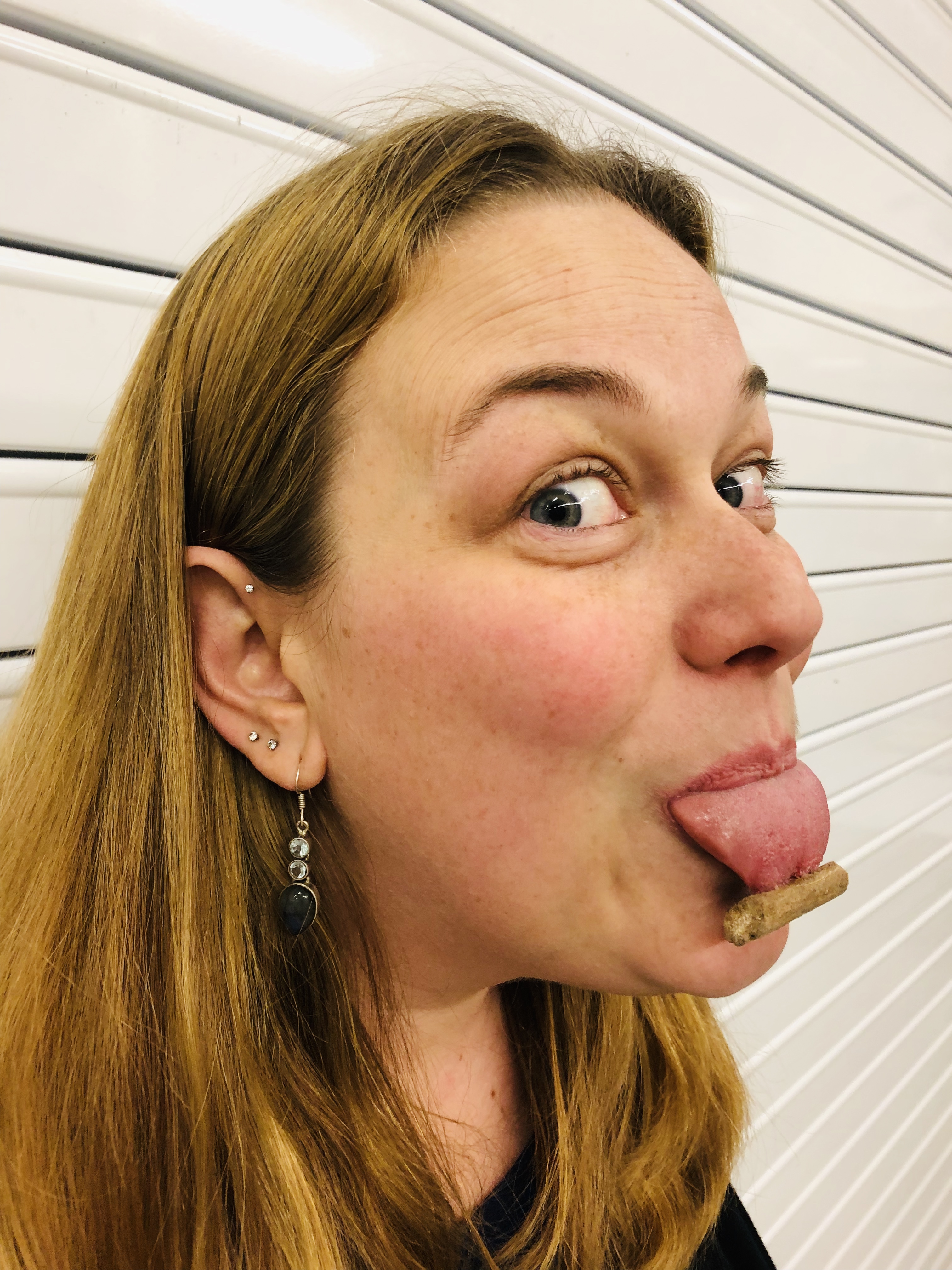This article first appeared in Issue 10 of our free digital magazine CURIOUS.
If you’re ever out walking and stumble across a geologist with a rock stuck to their tongue, fear not. They’ve not succumbed to the midday heat and started trying to eat their environment, they’ve simply struck fossilized bone.
In the pursuit of discovery, scientists have employed all kinds of bizarre avenues of investigation, from volunteering to be parasitized by hookworms and botflies, to detecting burning hydrogen with brooms (keeping it simple, NASA). By comparison, popping a few rocks in your mouth seems quite tame.
It’s certainly become unremarkable for geologist and palaeontologist Dr Randall Irmis from the Natural History Museum of Utah. With decades of experience in the field, the geological tests that would look downright weird to the unknowing observer have become second nature for Irmis. Perhaps even more incredible is that with so much experience tasting his way through geological time, he’s so far managed to avoid licking anything too disgusting – discounting fossilized feces, of course.
We caught up with Irmis to find out more about the art of rock licking, what it can tell us, and what flavors, smells, and textures there are to discover while working in rock layers of the late Triassic.
Do scientists lick rocks?
RI: Well, I can’t speak for all scientists, but I’m both a palaeontologist and a geologist and there’s a couple of reasons why we might lick rocks or touch them to our tongue. Perhaps the one that gets the most excitement is that we actually use it as a way to tell whether something is fossil bone or not. It turns out that fossil bones will stick to your tongue with a little bit of moisture, whereas most rocks, petrified wood, and things like that, will not stick to your tongue. There are always exceptions, of course.
Is it about texture or taste?
RI: With the fossil bone test, it’s simply: does it stick to your tongue or not? But one other reason that geologists might put rocks in their mouths is that we are often interested in the size of the grains that make up sedimentary rocks. It turns out that in the field, one of the most effective ways to tell whether a rock is made out of silt versus clay is to take a little bit and grind it between your teeth. If it’s smooth, it’s clay. If it’s a little gritty, then it’s got some silt in it.
Natural History Museum of Utah palaeontologist Carrie Levitt-Bussian licks a dinosaur bone to see if it sticks.
Image credit: Carrie Levitt-Bussian
Licked anything particularly memorable?
RI: That’s a hard one because it’s so normal that sometimes I don’t think about it. There’s a lot of things that when we’re out looking for fossils, prospecting for new sites, you pick something up and you’re almost sure it’s fossil bone, and then you stick it to your tongue and it doesn’t stick. So then you have to re-evaluate. If it’s not fossil bone, it could be wood or fossilized roots that get solidified.
One way in which the test between clay and silt has been useful is that there are some rock layers I work in, in the western US, that are from the late Triassic period and there are actually different layers that are separated out based on their grain size, so one layer has more silt than the other. So, to be able to tell exactly which layer you’re in, that’s one of the best ways to work out if the rock has silt or clay.
Any nasty surprises?
RI: Thankfully, not for the most part. Sometimes you pick something up and it turns out to be a modern cow bone, but thankfully, no nasty tastes. Obviously, you want to make sure that it’s somewhat clean and not covered in gunk or whatnot. When we’re putting the sedimentary rocks between our teeth, I always dig in and get a fresh sample.
Subscribe to our newsletter and get every issue of CURIOUS delivered to your inbox free each month.
But yeah, thankfully, it hasn’t happened, although a great joke to play on someone is you pick up a coprolite, which is fossilized poop, and ask someone to test whether it’s bone or not. Of course, there’s nothing wrong with that, it’s fossilized. It’s millions of years old. You’re not going to get anything bad from it, but it always gets a laugh.
What about other weird tests?
RI: That’s always a funny question for scientists because we’re so normalized to it that it doesn’t seem very weird to us, but if outsiders were observing us doing it, they’d think, wow, that’s really strange.
One thing that comes to mind is that some types of limestone actually have a rotten smell to them. So you might see geologists smelling limestone, breaking it open, and when you do it has what’s called a fetid smell. I believe that has to do with the organic matter preserved in the limestone, but I’m not 100 percent sure.
We also carry around color charts that look like paint samples because the color of the rocks can be really informative. If you see a geologist with that, they’re not planning to redecorate anytime soon, at least, not in the field.
CURIOUS magazine is a digital magazine from IFLScience featuring interviews, experts, deep dives, fun facts, news, book excerpts, and much more. Issue 13 is out now.
Source Link: Why Do Geologists Lick Rocks?
